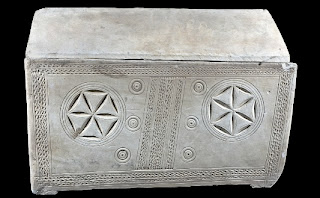
This week The New York Times printed a provocative article showing how the acceptance of homosexuality, an issue that has roiled most of the predominately white mainline denominations in recent years, can carry a steep price tag in African American churches as well.
Citing one pastor, they note that he lost almost all of his congregation after he supported same sex unions in his mainline denomination, the UCC. In an Atlanta church attendance has fallen from 6,000 to 3,000 over differences with the senior pastor on convictions regarding human sexuality.
For some, the issue is more existential still. Recounting the tale of an African American pastor of Tabernacle Baptist Church, the Rev. Dennis Meredith, the article chronicles how his son’s coming out of the closet led he and his wife to reconsider the biblical teachings on homosexuality. Their pilgrimage brought them into contact with materials by American Baptists such as Harvard’s Peter Gomes, a gay man in ministry and chaplain at Harvard.
“. . . five years ago, his middle son, Micah, told him that he is gay. Mr. Meredith and his wife began to read liberal theologians like Mr. Gomes and to look at Scripture again. What matters most in the Bible, Mr. Meredith said, was Jesus’ injunction to love God and to love your neighbor as yourself, and that includes gay men and lesbians. As he preached greater acceptance of gay people, Mr. Meredith saw the face of his congregation change.
“. . . five years ago, his middle son, Micah, told him that he is gay. Mr. Meredith and his wife began to read liberal theologians like Mr. Gomes and to look at Scripture again. What matters most in the Bible, Mr. Meredith said, was Jesus’ injunction to love God and to love your neighbor as yourself, and that includes gay men and lesbians. As he preached greater acceptance of gay people, Mr. Meredith saw the face of his congregation change.
About three years ago, many older members, those who had hung on through the church’s waning, and who drove in from the suburbs because they had attended Tabernacle as young people, gradually began to leave. They took with them their generous, loyal tithing. The 90-year-old church had money to cover salaries and utilities but had a hard time paying for properties it had bought nearby. In September, Mr. Meredith held a commitment ceremony in the church for two lesbian couples. More people left after that." http://www.nytimes.com/2007/03/27/us/27churches.html?pagewanted=1&_r=1
Heretofore, many African Americans have been reluctant to join with their white colleagues in upholding traditional views of human sexuality against the revisionist interpretations. Some see it as a civil rights issue. Others find it difficult to make common cause with evangelicals since many still suspect them of racism. The more progressive social liberals in the mainline denominations who took leadership in the civil rights movement are often the same ones who have been defending the cause of homosexual unions.
Evidently, the stand of conscience by some African American pastors will not always be applauded by their own congregations, particularly those in the church who see the Bible condemning same sex unions as immoral. It will be interesting to observe whether our sisters and brothers in the black church will be able to uphold biblical authority AND a compassionate ministry to hurting persons without tending toward organizational schism.




